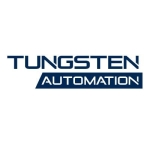I am a UiPath developer. I have automated web-based processes like HR and finance. I have also worked on a use case consisting of web-based automation, Excel automation, and email automation.
The solution reduces FTEs in processes that require 100 people for repetitive tasks. It really helps customers to reduce human effort and guides the robot to do efficient work within the schedules.
It's very easy to manage and automate Orchestrator because it allows plug-and-play models and drag-and-drop approaches.
UiPath should be able to adapt to other operating systems like Linux or macOS. The tool must reduce the activity required for workflow design. It should be made similar to Visual Studio. It should provide a better way to analyze the recursion functions.
I have been using the solution for six years.
Compared to Automation Anywhere or other open-source tools, UiPath's stability is very good. However, when it comes to very complex hybrid automation with high-density bots, where we require many third-party applications, UiPath cannot handle such scenarios.
PDF automation is very complex. Either we will have to use a third-party Python script, or we will have to build a custom OCR. We require good programming knowledge. The product must improve its stability. I don't see much stability. Though it is available in an environment like Mac, it is not up to the mark as it is in Windows.
First, we validate with the logs. In logs, we have to identify certain categories of errors. From there, we identify the root cause. During development, we rename all the activities to appropriate annotations so that we can backtrack them accordingly. If there are any exceptions, it is passed on to the Global Handler. If any error occurs, we email the support team with a screenshot. For example, if ten transactions have been processed and there is a system exception, we immediately send a screenshot to the support team.
The initial setup was straightforward. It did not include the CI/CD pipeline. There were two machines. One was the developer, and the other was the production machine. We had to deploy it into the production machine. An Orchestrator admin and a developer are enough to deploy the solution.
To deploy the solution, we create the package and describe the overall process. We compress it into a new package and assign the robots with the machine key. Then, we create certain asset queues for the processes and upload them into Orchestrator.
Once all the assets are created, we assign a VM to the package. Then, we upload the package and map it to the process name. We add triggers if required, and if any change request comes, we raise the request, the manager approves, and we proceed with the implementation. It is very easy to maintain the product if there are no version changes in the applications.
The licensing cost is very high.
UiPath's cost is very high. When we transfer the knowledge of a robot to another, certain images are not available. It's difficult to identify the XML collectors. A proper annotation or guidance must be given to the user. When a new version is updated, the tool becomes slower. It is very difficult to maintain version history because of the bulk update activities. If we want to convert from Windows to Windows legacy, it is very difficult.
We get the input files from emails. We read the input files, extract data from the template, and open it in the browser. We worked on an engineering product. We used UiPath to get information about the testing and the model's integrity. Certain information was in the Excel file. We had to extract information on whether the model had to be tested with plastic or without a plastic cover. There were drop-down messages. We captured the values and injected the JavaScript modules to autofill the data.
Once the testing was created, we created a sample order. We filled out a form from the input file, gathered all the details into a summary, and wrote an HTML code for it. Then, we sent it to the client and informed them that the test had been created successfully.
For SAP, we did an auditing type of automation. For example, we automated payments and filled in all the information from the template. Then, we had to propose, settle, and release the payment. In SAP, we are using VBScript also. It has some complex scenarios.
If it is a PDF type of automation, I would recommend the latest technology called Document Understanding. I can define and train the fields using certain anchors and then go with extractions. Machine learning models are also possible. It would be the best way to do a PDF automation.
Calling an API would be the right choice if it is an API approach. If we have been asked to download certain files from SharePoint, we create a custom Azure application. We define secret keys, certificates, and IDs. We define certain API permissions. Then, through UiPath, we install Microsoft 365. We can then download the file. If the process is more complex, ABBYY is the best choice.
Building automation using the solution is easy. We need a little bit of programming knowledge for complex or hybrid automation. For easy automation, plug-and-play connectors and activities are readily available in the solution. We just have to get trained and use them.
UiPath speeds up digital transformation and reduces the cost of digital transformation up to a certain extent. We required a ticket-tracking system where we needed additional third-party software like OneDrive and Office 365 to be installed. For Box drive, we had to install SDK. We also had other solutions like Google Drive, spreadsheets, and Zoom APIs. The solution has helped a lot to minimize our on-premise footprint.
It enables us to implement end-to-end automation. It is important for customers because they want to avoid repeated tasks. If a customer wants to search for an email and upload it in a different portal, they might have to open multiple pages. However, if we choose end-to-end automation, things can work in the backend. The Picture-in-Picture mode in UiPath allows the user to work parallel to automation. So, while the robot runs, the user can do their work parallelly.
I have not used the AI functionality much. I have used AI for a POC of a custom model where I had to identify objects from an image. There were many questions like how many people were in the image, how many cars were there, how many street lights were there, and how many fruits were there. I had to find the count of the people or objects and their confidence scores. It was a small POC with the object detection model built with Python.
The product has helped to stabilize standard and structured processes. If the data is unstructured or unorganized, we use ABBYY as a third-party application. We have to train and classify all the assets and forms. The robot trains the modules using the connector and converts the semi-structured data into structured data. We can make automation more scalable using third-party applications. The cost is very high, though. UiPath is not that stable.
I have used the Academy courses. I have also completed enterprise training and acquired a certificate as an RPA developer. UiPath has a very good community. If we get stuck on anything, we can get solutions for our problems. Currently, ChatGPT is also helping us in many ways. My UiPath skills are really good. I keep doing R&D on AI Fabric, automation, and other features. The community helps me to learn.
A little bit of programming knowledge is a must to use the tool. A level one automation or a straightforward case with repetitive tasks does not require much programming knowledge. The user can use the solution if they have knowledge about the dynamic selector and wildcards. They should have a little bit of fundamental knowledge of computers and automation.
Overall, I rate the solution an eight out of ten.






















